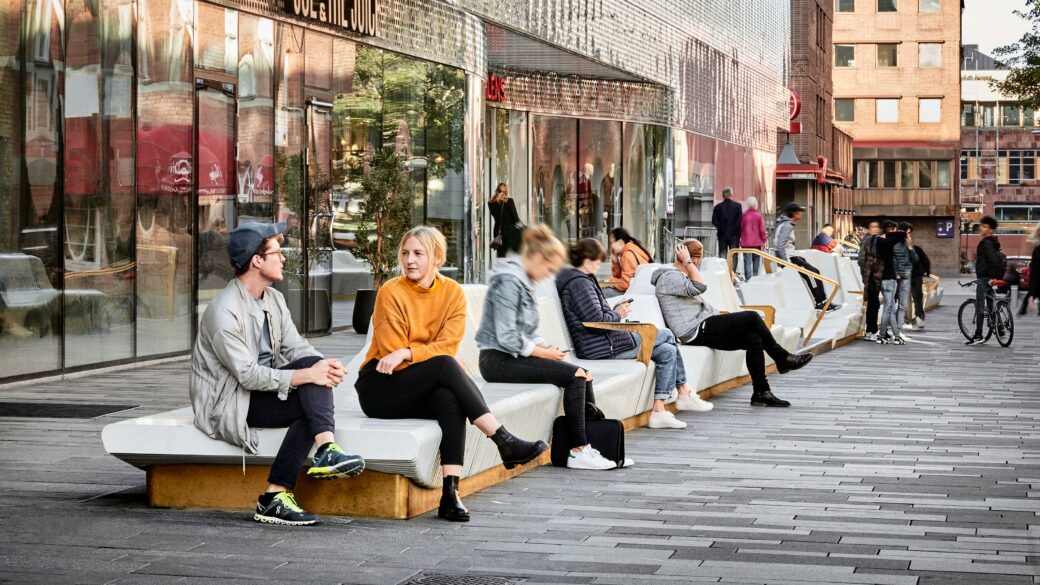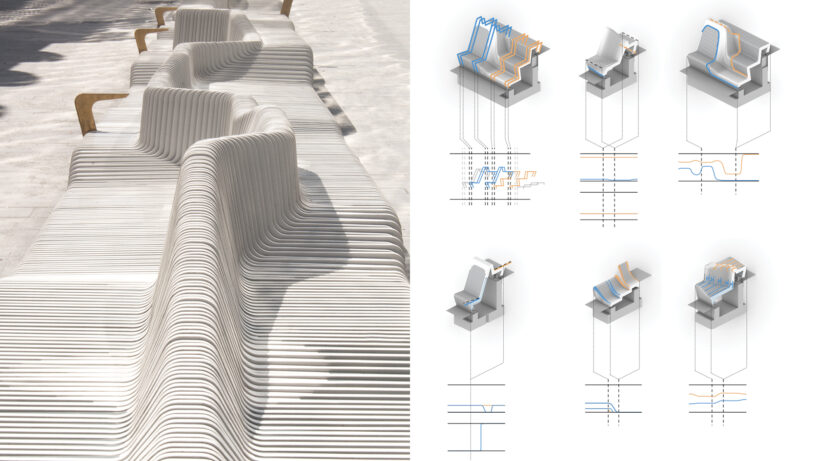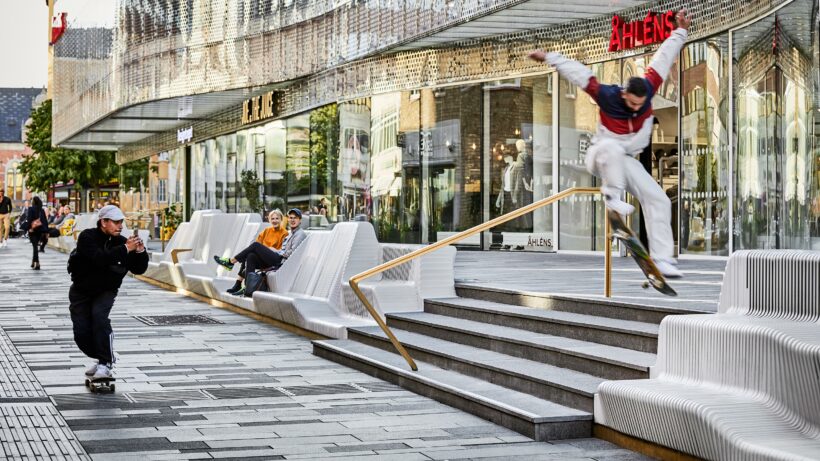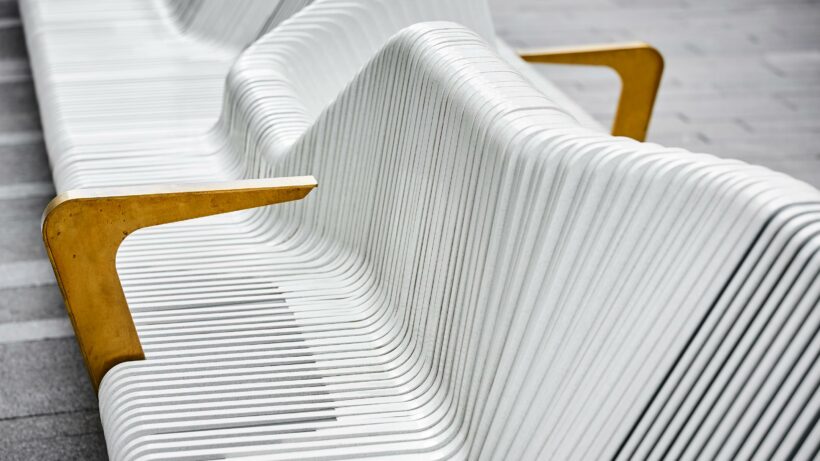Here you will find additional materials, such as reports and links, where you can read more about the research project or similar studies.

The Forumtorget Bench
Computational techniques offer new opportunities within architectural design practice, affecting not only issues of form and fabrication, but also the management of architectural design processes. This white paper presents the bespoke process for the computational design development of a public furniture in the form of a 65-meter-long bench specifically designed for Forumtorget, a public square in Uppsala, Sweden.
Project period
The paper covers the project design development from concept to completion, as well as the development of computational design system* that facilitated this process. The use of computational design* methods was essential for the complex design, and beyond formal possibilities and process automation it allowed a postponement of certain design decisions to very late in the project, which in turn facilitated a less linear design process. Reflections on the specific design and development workflows developed are presented, including issues relevant at competition stages, during design development and refinement, and as part of procurement and production. The Endnotes section include additional details in terms of methods, processes and design solutions.

The Forumtorget Bench development was led by Dsearch, a specialist team for computational design within White Arkitekter AB. The bench was a key part of a 2011 winning competition proposal for the transformation of Forumtorget, a square in central Uppsala. The computational design systems and processes developed were carefully set up to support the collaboration between multiple parties –architects, designers and landscape architects, client representatives, facility managers, producers and the general public. The project development was extended in time due to the refurbishment of an adjacent department store – from 2011 to 2018. This meant that the development was subjected to shifting project conditions, as well as the continuous advancement of the computational design standards developed by Dsearch. The conditions for the design development also included a demand for longevity – 30+ years in a demanding location, which sets this development apart from similar prototypical projects, reflected in the robust design and material selection.

